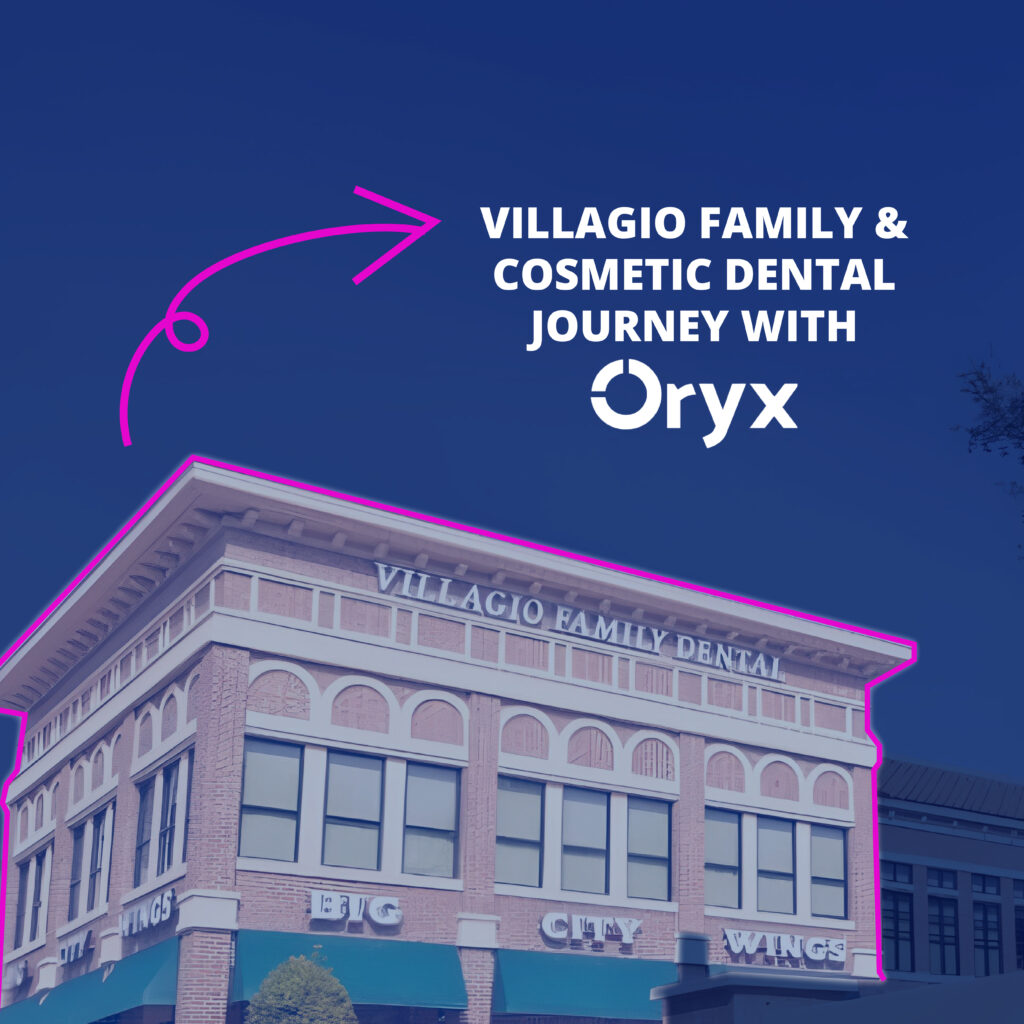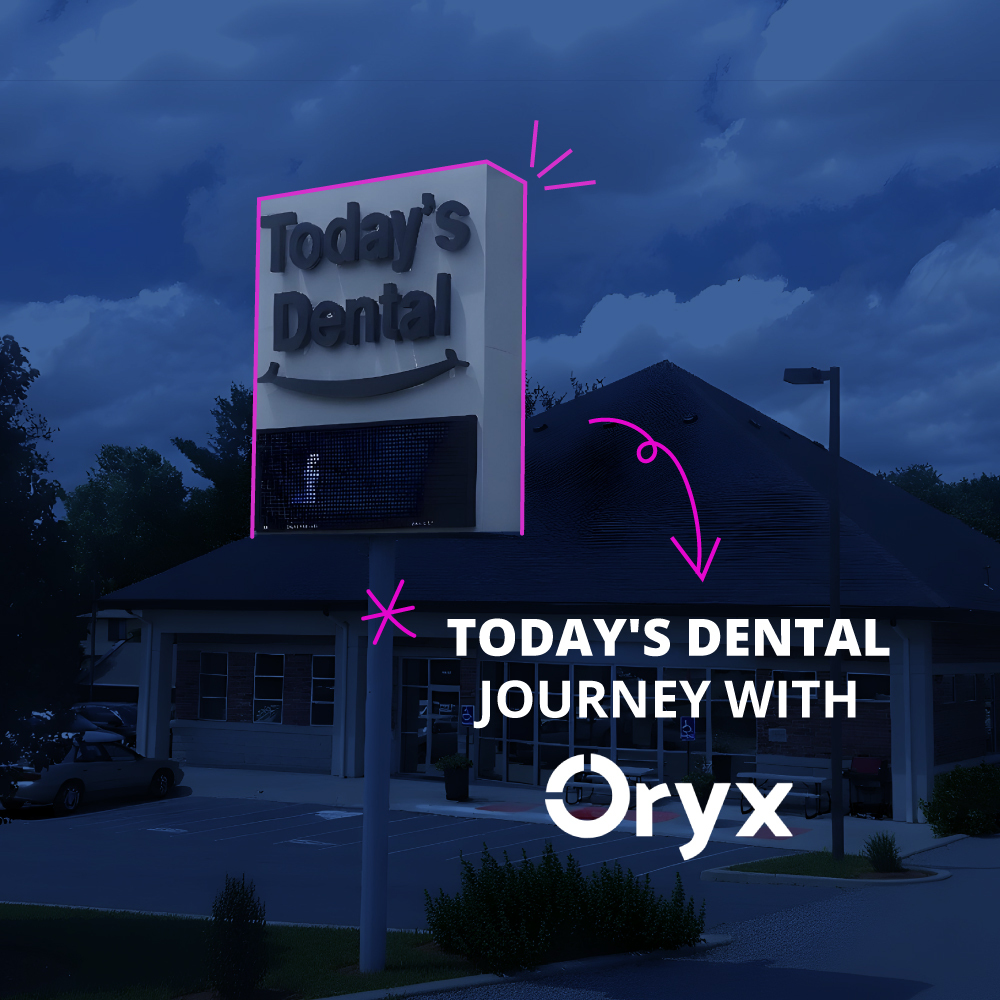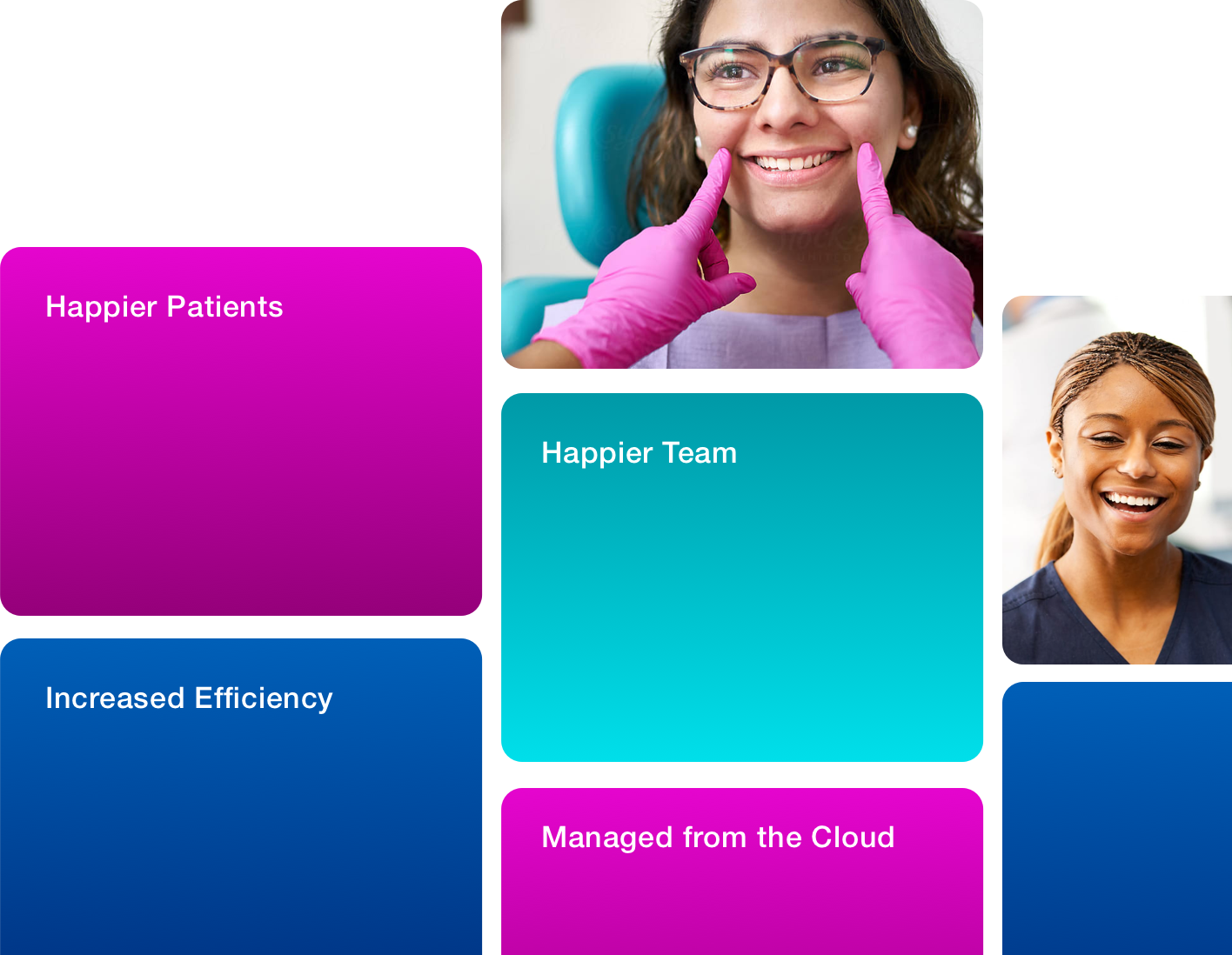William Kohl, Founder & CEO of F1 iT, first stepped into the world of dental IT by accident. One day, at a routine orthodontist appointment, he helped fix a stubborn Panoramic X-ray machine that had stumped the practice’s IT team. Twenty-two years later, his company, F1 iT, has become a trusted partner for dental practices nationwide.
Today, F1 iT serves practices of all sizes—from solo practitioners to large dental service organizations (DSOs). With decades of combined experience, the team is familiar with the ins and outs of software, servers, security, and everything in between.
Kohl was first introduced to Oryx Dental through his clients. What began as an exploratory effort quickly turned into a relationship. As more clients mentioned their interest in using Oryx, F1 eventually began to recommend it as a software option.
F1 works with a wide variety of organizations, each with different budgets, needs, and goals. Different practices prefer different digital imaging hardware from various brands, but Oryx is capable of integrating with a wide variety of existing systems to support customer success.
The reasons are clear: Oryx offers seamless integration, ease of use, and flexibility to manage different imaging hardware and software setups. The F1 team rarely has to call into Oryx’s support team for assistance. When it comes to cloud-based software options, Oryx is one of the best.
The Case for Cloud-Based Platforms
With the rise of cloud-based technology, dental practices are moving away from in-house server systems, and Oryx is leading that shift.
“The world of technology is trending towards the cloud,” Kohl explains.
There are several reasons why:
• Predictable Costs
Unlike in-house server systems, which have unpredictable maintenance and replacement costs, cloud-based platforms offer predictable subscription fees. Data housing, security, and other expenses are generally the same month over month.
• All-in-One Platform
Rather than seeking out, installing, and maintaining multiple third-party apps that don’t necessarily integrate well, cloud-based software packages multiple features in one. Maintaining one application is easier than keeping up with a dozen different ones.
• Automatic Updates
There is no need to schedule downtime for updates—the cloud handles this automatically. With cloud-based software, F1 clients avoid turning their server off to update it, replace a drive, or conduct routine maintenance.
• Liability Shift
When partnering with a software company, that company assumes a considerable amount of liability. They’re now responsible for backups, updates, and data security while guaranteeing uptime to support your office. In a cloud-based environment, everything is tested and checked before it’s released to the public. This takes an enormous amount of responsibility off the shoulders of the individual practice.
• Scalability
When expanding to new locations, cloud-based software allows practices to add new logins and licenses while maintaining a centralized database. This is useful for multi-location practices but shouldn’t be overlooked by individual and startup practices. If a startup uses cloud-based software from the very first day of operation, staff will never have to worry about migrating data to new locations later on.
• Cross-Platform Compatibility
The business world is almost entirely PC-based, but cloud-based software allows practices to run entirely on Macs or a combination of PCs and Macs. Depending on staff preference, data can be accessed from computers, tablets, or even phones.
• Accessibility
Dentists can access patient records and create treatment plans from anywhere, even from the comfort of their homes. If an emergency arises when a dentist is out of town, they can easily log in to the software from an authorized IP address.
Addressing the Cons of Cloud-Based Systems
Kohl and F1 work with a wide variety of clients, many of whom are apprehensive about certain aspects of switching to cloud-based software.
“I think it’s fair to address the cons of cloud-based software,” said Kohl. “But each con has caveats.”
• Internet Outages
Technology has significantly improved over the last decade, and internet connections are more stable. However, they occasionally go down. In this case, practices worry they won’t be able to access a cloud-based system the way they would a localized server.
Kohl recommends creating a proper network infrastructure with redundancy to mitigate this risk. His team often sends up a secondary internet source or the ability to use a 5G connection, just in case.
• Security and Privacy Anxiety
Patient privacy is a massive priority for practices. Kohl often encounters dental professionals who worry that storing data in the cloud makes it more vulnerable and gives them less control over security. This couldn’t be further from the truth.
Here are just a few of the security features Kohl and the F1 team have set up for clients using cloud-based software in the past:
-
Two-factor Authentication (2FA)
-
Time-based One-Time Password (TOTP)
-
Single Sign-On (SSO)
-
Multi-factor Authentication (MFA)
-
IP Address Filtering
• Learning Curve
Change isn’t easy, especially in established practices. Switching to cloud-based software requires learning a new platform, which can disrupt operations or cause staff dissatisfaction.
However, browser-based practice management systems design their user interface in a highly intuitive way to remove barriers to implementation. The software is designed to be easy to use, and most support teams are on call to assist in the transition.
“Ultimately, I think there are more pros than cons in the switch to cloud-based,” said Kohl.
Dental IT FAQs
Does Cloud-Based Software Save Money?
Setting up a server requires licensing costs, hardware costs, and maintenance costs for local databases for security, backups, and updates.
“If you stop there,” says Kohl, “Sure, it can be cheaper in the short-term.”
However, on-premise servers come with hidden long-term costs. Downtime is unpredictable and extremely expensive. There’s also the “refresh cycle,” where equipment should be replaced every 3–5 years as part of regular maintenance. The one-time cost of server equipment adds up.
Additionally, practices that offer features found in cloud-based software, like seamless online booking and streamlined patient communication, gain a competitive edge. Building this same experience with an in-house server requires integrating multiple third-party software options, all of which cost extra. If they aren’t integrated properly, practices risk creating a frustrating patient experience that can cost money as patients switch to competitors with better tech infrastructure.
Bottom line: In the long term, going cloud-based will save you money.
Can I Store 3D Imaging in the Cloud?
While cloud-based systems effortlessly handle most dental data, 3D imaging remains challenging due to its large file sizes. Some vendors offer cloud-based storage for 3D images, but these images are not integrated with regular practice management systems.
“I’ve heard this is one of the biggest pushes of 2025. As everything moves to the cloud, 3D imaging will follow. It’s an engineering problem, and I think we’re getting close to solving it.”
(Editor’s note: 3D imaging storage is one of Oryx’s major product initiatives for 2025!)
Do You Still Need an IT Team with Cloud-Based Software?
“There’s this misconception that if you’re cloud-based, you don’t need IT management,” Kohl says.
There are still critical components that IT should handle — like ensuring your network has redundancies and your devices are protected against ransomware and cyberattacks.
“It doesn’t matter how small you are. For some people, their whole ‘career’ is finding vulnerabilities,” says Kohl.
Cloud-based software can protect data in the cloud, but cannot secure your office devices, backups, or compliance setup — that’s where IT teams stay essential.
Final Thoughts: Technology and Growth
For F1 iT, success isn’t just about fixing technical problems — it’s about helping clients grow.
“As an IT company, we care about the growth of our customers. If they’re successful, that’s ultimately a success story for us,” Kohl emphasizes.
By recommending Oryx, F1 iT ensures its clients have the tools to streamline operations, reduce costs, and scale effectively.
“Investments in technology ultimately lead to a better patient experience,” says Kohl.
Discover how Oryx can elevate your practice in a personalized demo.
We’ll take the time to understand your needs, showcase the features and benefits most relevant to you, and answer any questions. You’ll leave with all the information you need to decide if Oryx is right for you.






